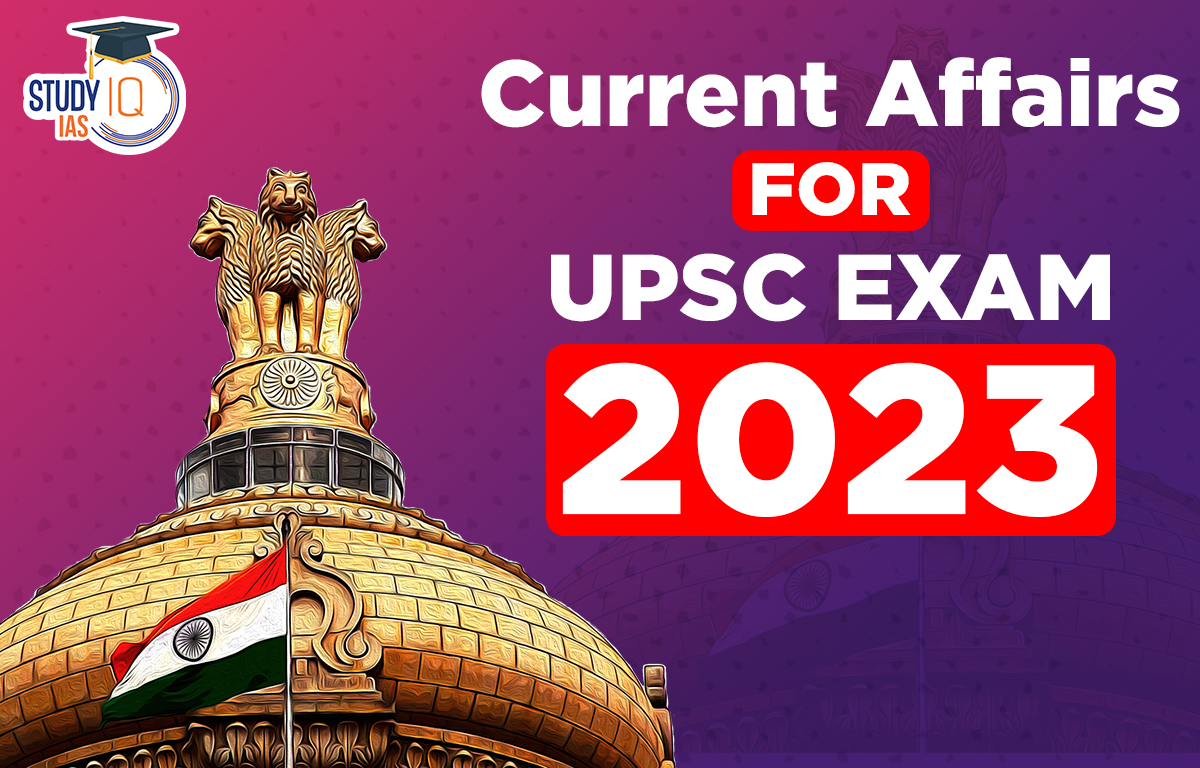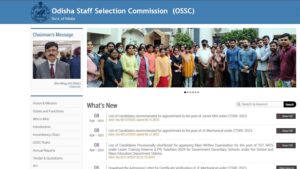Current Affairs 25th March 2023 for UPSC Prelims Exam
Armed Forces (Special Powers) Act (AFSPA)
Context: The Union Government has recently extended the AFSPA Act in 8 districts of Nagaland.
What is Armed Forces Special Powers Act, 1958?
- Origin: The Act in its original form was promulgated by the British in response to the Quit India movement in 1942.
- After Independence, the act was retained, first brought in as an ordinance and then notified as an Act in 1958.
- Objective: Provide certain special powers to members of the armed forces in disturbed areas in the State of Arunachal Pradesh, Assam, Manipur, Meghalaya, Mizoram, Nagaland and Tripura.
- It is enforced by the Ministry of Home Affairs.
- Disturbed Area: A disturbed area is one which is declared under Section 3 of the AFSPA.
- An area can be disturbed due to differences or disputes between members of different religious, racial, language or regional groups or castes or communities.
- The Union Government or the Governor of the State or administrator of the Union Territory can declare the whole or part of the State or Union Territory as a disturbed area.
- Provisions: Armed forces have been given the following powers:
- Authority to prohibit a gathering of five or more persons in an area
- Use force or even open fire after giving due warning if they feel a person is in contravention of the law
- Arrest a person without a warrant
- Enter or search a premises without a warrant on the basis of reasonable suspicion
- Ban the possession of firearms
- The Act further provides blanket impunity to security personnel involved in such operations
Significance of AFSPA Act
- Effective Counter-Insurgency: The fighting capability of the militants in the North- East and J&K has improved considerably.
- Hence, with the powers given by AFSPA, the armed forces have been able to protect the borders of the country for decades.
- Operational Hurdles: The Armed Forces are required to operate in hostile terrain. The forces also work in an unfriendly population environment exposing themselves to grave dangers.
- Legal Battles: Operating under such an environment requires a protective law otherwise the forces get embroiled in legal battles and their effectiveness is reduced.
- Effective Law and Order: If the provisions of the AFSPA have to be invoked with regard to a particular area, it means that the State Government was unable to maintain peace and tranquility.
Criticism of AFSPA Act
- In consonance with States: The Act empowers the Union Government to unilaterally take a decision to impose AFSPA; this is usually done informally in consonance with the State Government.
- Violates Human Rights: Allegations have been made against security forces of mass killings and rape.
- Misuse of Absolute Power: The Act has often been used to settle private scores, such as property disputes, with false tip-offs provided by local informants to security forces.
- Failure to Contain Violence: The Act has failed to contain terrorism and restore normalcy in disturbed areas.
- Compromising Professionalism: With AFSPA around, military or paramilitary units do not feel the need for restraint or fire control. That leads to a sharp drop in professionalism.
- Dents India’s Image: A law like AFSPA is inconsistent with the structure and spirit of India’s democracy and brings down India’s image at the global high table.
Current Affairs 24th March 2023 for UPSC Prelims Exam
Parole and Furlough
Context: Supreme Court directed that the prisoners released on emergency parole during the Covid-19 pandemic have to surrender within 15 days.
About Parole
- It is a system of releasing a prisoner with suspension of the sentence. The release is conditional, usually subject to behaviour, and requires periodic reporting to the authorities for a set period of time.
- Parole is not a right, and is given to a prisoner for a specific reason, such as a death in the family or a wedding of a blood relative.
- It may be denied to a prisoner even when he makes out a sufficient case, if the competent authority is satisfied that releasing the convict would not be in the interest of society.
- Since prisons is a State subject under 7th Schedule of the Constitution, each State Government makes its own Prison Rules.
About Furlough
- It is given in cases of long-term imprisonment. The period of furlough granted to a prisoner is treated as remission of his sentence.
- It is seen as a matter of right for a prisoner, to be granted periodically irrespective of any reason, and merely to enable the prisoner to retain family and social ties, and to counter the ill-effects of prolonged time spent in prison.
How Parole differs from Furlough?
- Parole and furlough are both forms of conditional release.
- Parole can be awarded in the case of short-term detention, whereas furlough is allowed in the case of long-term detention.
- Parole lasts for one month, whereas furlough is generally granted for a maximum of 14 days.
Significance of Parole and Furlough
- Both parole and furlough are considered as reformative processes. These provisions were introduced with a view to humanise the prison system.
- Parole and furlough are covered under the Prisons Act of 1894.
Pradhan Mantri Ujjwala Yojana (PMUY)
Context: The Cabinet Committee on Economic Affairs has approved a subsidy to the beneficiaries of Pradhan Mantri Ujjwala Yojana (PMUY).
About Pradhan Mantri Ujjwala Yojana (PMUY) 2016
- Aim: To provide deposit-free LPG connections to women in poor households.
- To shift to LPG from conventional fuels like firewood and cow dung cakes, which are considered hazardous.
About PMUY-1.0
- Target under the scheme was to release 8 Crore LPG Connections to the deprived households by March 2020.
- The release of 8 Crore LPG connections under the scheme has also helped in increasing the LPG coverage from 62% on 1st May 2016 to 99.8% as on 1st April 2021.
About PMUY 2.0
- The Union budget for FY 21-22, provided for an additional one crore LPG connection under the PMUY scheme. The target was achieved in January 2022.
- One crore additional PMUY connections (under Ujjwala 2.0) aim to provide deposit-free LPG connections to those low-income families who could not be covered under the earlier phase of PMUY.
- Migrants will not be required to submit ration cards or address proof.
Significance of PMUY
- As of March 1, 2023, there were 9.59 crore PMUY beneficiaries.
- The average LPG consumption of PMUY consumers has increased by 20 per cent from 3.01 refills in 2019-20 to 3.68 in 2021-22.
- Subsidy is credited directly to the bank accounts of the eligible beneficiaries

Khandagiri and Udaygiri Caves
Context: The Archaeological Survey of India (ASI) has warned that the Khandagiri and Udaygiri caves in Bhubaneswar are eroding at a rapid pace.
About Khandagiri and Udaygiri Caves
- Location: Udayagiri and Khandagiri caves are located in the outskirts of Bhubaneswar, Odisha.
- Out of these 33 caves, 15 are situated in the Khandagiri Hills while 18 of them are located in the Udayagiri Hills.
- These twin caves are located on the two adjacent hills, which are part of the Kumari Mountain range.
- History:
- These caverns were made somewhere around the 1st and 2nd Century BC under the commission of King Kharavela of the Mahameghavahana dynasty that ruled Odisha (erstwhile Kalinga) during that time.
- The rock cut caves were built for the Jain monks to provide them a place to rest and meditate.
- Architecture
- Caves have sculptures only related to deities, religious observances and historical episodes.
- Architecture and intricate sculptures on the walls of these caves depict several stories from mythology and history.
- Inscriptions carved include Hathi Gumpha, Mancapuri and Sarpa Gumpha.
- Significance/Importance
- The multi-layered rock-cut caves illustrate the importance of Jainism in the history of Odisha.
- As per the Jain tradition, Mahavira (24thTirthankara) came to the Kumari Mountain and preached his doctrines.

Securities Transaction Tax
Context: The Government has raised the Securities Transaction Tax (STT) on futures and options contracts, in the stock market by 25% from April 1, 2023.
About Securities Transaction Tax (STT)
- It is a tax levied at the time of purchase and sale of securities listed on stock exchanges in India.
- STT is governed by the Securities Transaction Tax Act (STT Act).
- Taxable securities include equity, derivatives, unit of equity-oriented mutual funds, unlisted shares sold under an offer for sale to the public included in initial public offering (IPO) and where such shares are subsequently listed in stock exchanges.
- Objective: To mitigate tax evasion as the same is taxed at source.
Impact of STT Hike
- It will increase revenues of the government to a certain extent, while discouraging excessive trading in the futures and options (F&O) segment where a large number of retail traders end up losing money.
- It could lead to shifting of F&O traders to other locations that do not attract such taxes for participants.
Vembanad Lake and Ashtamudi Lake
Context: The National Green Tribunal (NGT) has imposed a penalty on the Kerala government for its failure to check pollution of the Vembanad and Ashtamudi lakes.
Vembanad Lake
- Vembanad Lake is the second largest wetland in India and was declared a Ramsar site in 2002.
- Location: Vembanad is the longest lake in India (96.5 km). It is also the largest lake in the state of Kerala.
- The famous Nehru Trophy Boat Race is held in a portion of the lake. Kuttanad, the rice bowl of Kerala, is located in the southern portion of the lake.
- Rivers such as the Achenkovil, Manimala, Meenachil, Muvattupuzha, Pamba and Periyar drain into the lake.
Ashtamudi Lake
- Location: it is located in Kollam district of Kerala. Kallada River is the major source of water for the lake.
- Hydrology: The name of the lake translates to Eight braids in Malayalam which can be explained by the palm-shaped topography. The lake has an opening to the Arabian Sea.
- Features: Munroe Island (Munroethuruth), a cluster of eight tiny islands, is located in the lake. Chavara South Island is mineral rich, especially for titanium.
- Significance
- The lake is called the gateway to Kerala’s backwaters and is well known for its houseboat and backwater resorts.
- Ashtamudi Wetland is part of list of wetlands of international importance.
National Green Tribunal (NGT)
- NGT is a statutory body established under National Green Tribunal Act, 2010. Its objective is to deal with environmental cases and speedy implementation of decisions relating to it.
- After Australia and New Zealand, India became the third country to form NGT.
- Structure:
- NGT bench consists of ten Judicial Members and ten Expert Members.
- Individual having a professional qualification with 15 years minimum experience in the subjects of forest conservation and environment and similar areas can become an expert member.
- The chairperson should have been retired as Supreme Court judge. The Judicial members must have been retired as Judge of the High Courts.
- NGT has powers to decide on environmental issues under following laws:
- The Water (Prevention and Control of Pollution) Act, 1974;
- The Water (Prevention and Control of Pollution) Cess Act, 1977;
- The Forest (Conservation) Act, 1980;
- The Biological Diversity Act, 2002;
- The Air (Prevention and Control of Pollution) Act, 1981;
- The Environment (Protection) Act, 1986;
- The Public Liability Insurance Act, 1991.
Liberalised Remittance Scheme (LRS)
Context: Recently RBI asked to monitor card spending under Liberalised Remittance Scheme (LRS) for tax purposes.
About Liberalised Remittance Scheme (LRS)
- The Reserve Bank of India introduced the Liberalised Remittance Scheme in 2004.
- The scheme permits all resident individuals, including minors, to remit up to USD 2,50,000 per financial year (April – March) without any restrictions for any permissible current or capital account transaction or a combination of both.
- There are no limitations on the frequency of remittances under LRS; a resident individual may not make any further remittances under this scheme during the financial year once they have already made a remittance of up to USD 2,50,000.
- Payments for foreign tours through credit cards are not being captured under the Liberalised Remittance Scheme (LRS) and such payments escape tax collection at source (TCS).
- Requirements: It is mandatory for the resident individual to provide his/her Permanent Account Number (PAN) for all transactions under LRS made through Authorized Persons.
- Ineligibility: The Scheme is not available to corporations, partnership firms, Hindu Undivided Family (HUF), Trusts etc.
Remitted Money can be used for:
- Expenses related to travelling (private or for business), medical treatment, study, gifts and donations, maintenance of close relatives and so on.
- Investment in shares, debt instruments, and buy immovable properties in the overseas market.
- Individuals can also open, maintain and hold foreign currency accounts with banks outside India for carrying out transactions permitted under the scheme.


 Daily Quiz 18 April 2025
Daily Quiz 18 April 2025
 OSSC CGL Syllabus 2025 and Exam Pattern ...
OSSC CGL Syllabus 2025 and Exam Pattern ...
 AI and its Regulation in India, Limitati...
AI and its Regulation in India, Limitati...





















